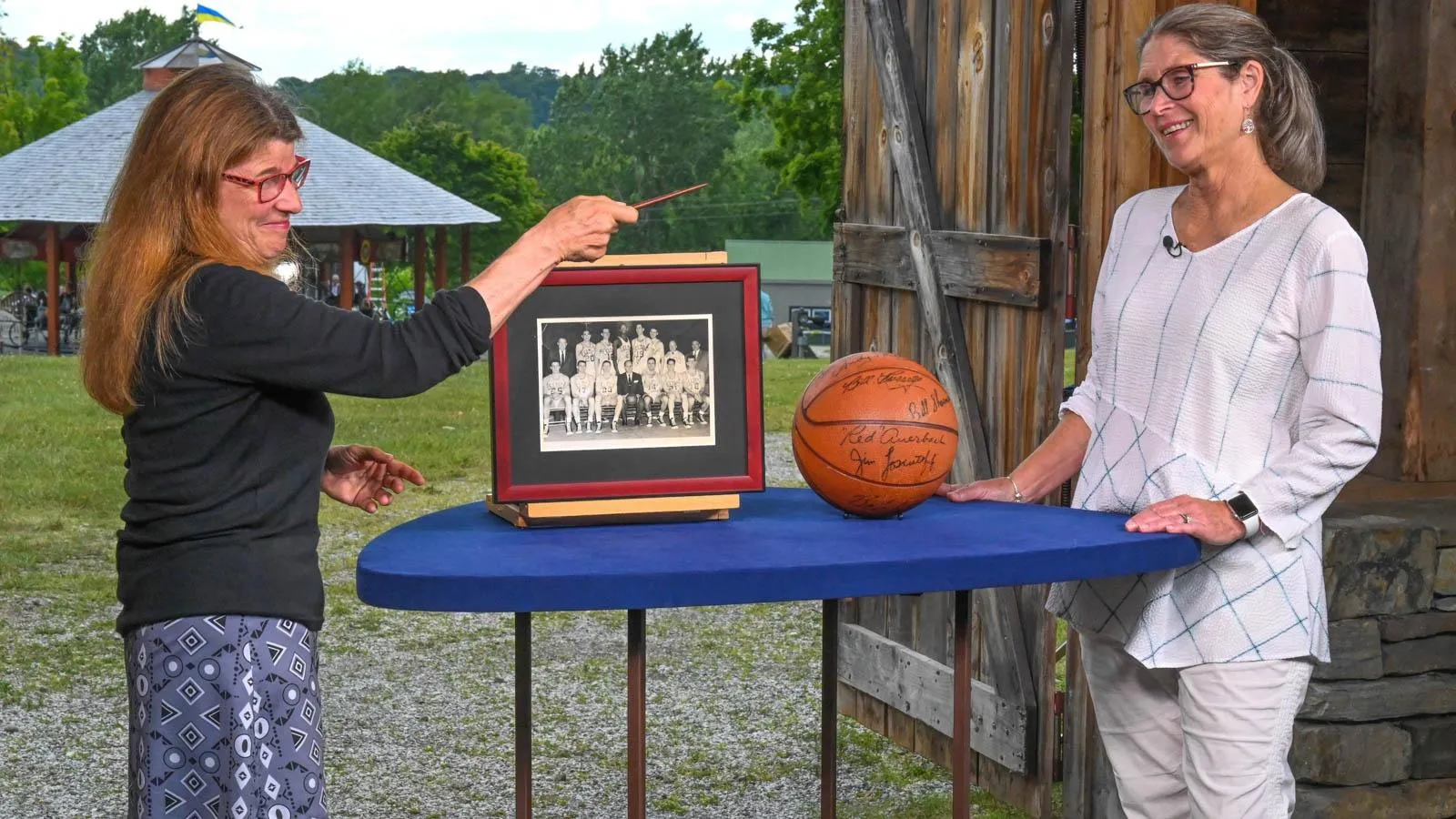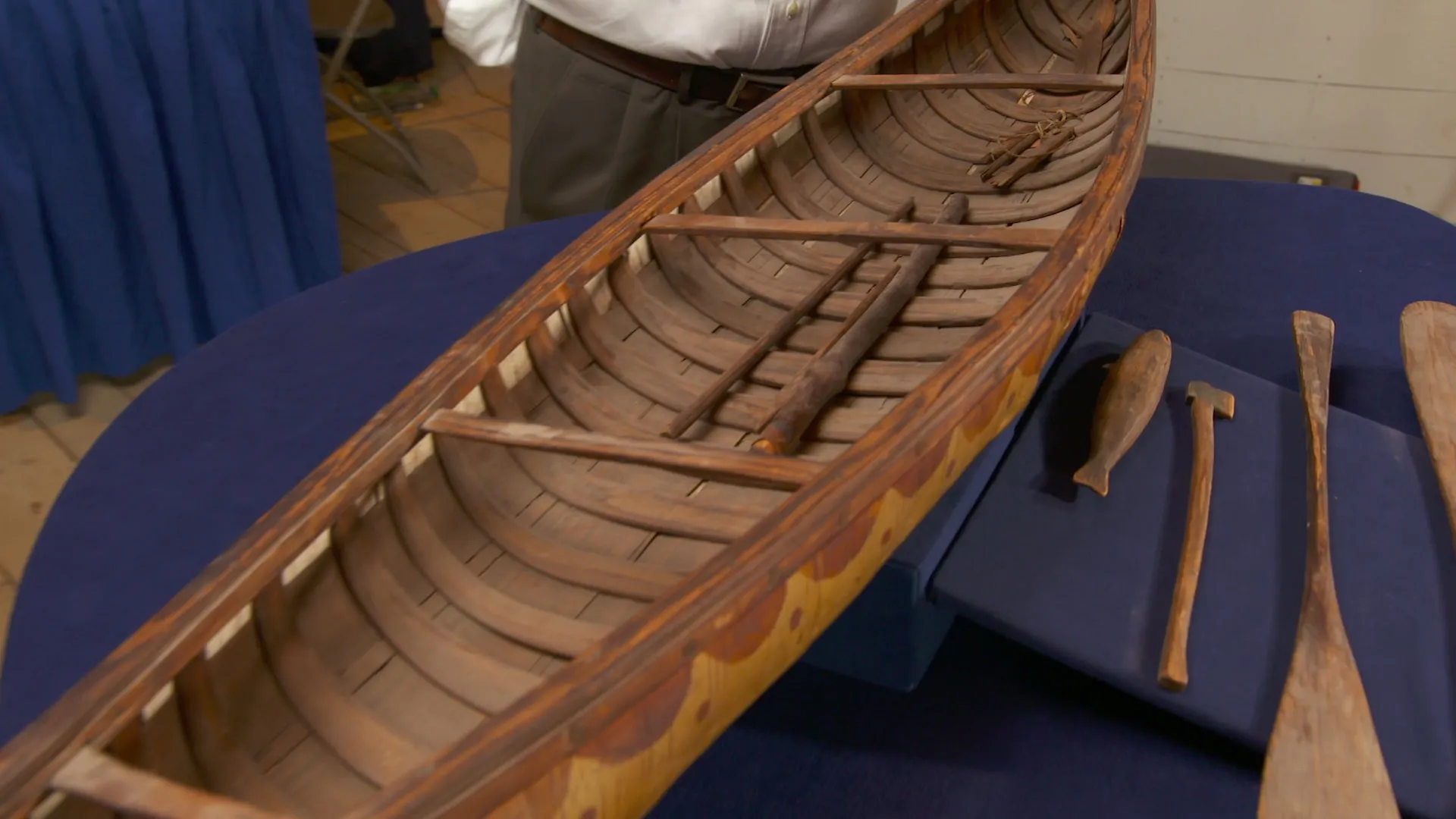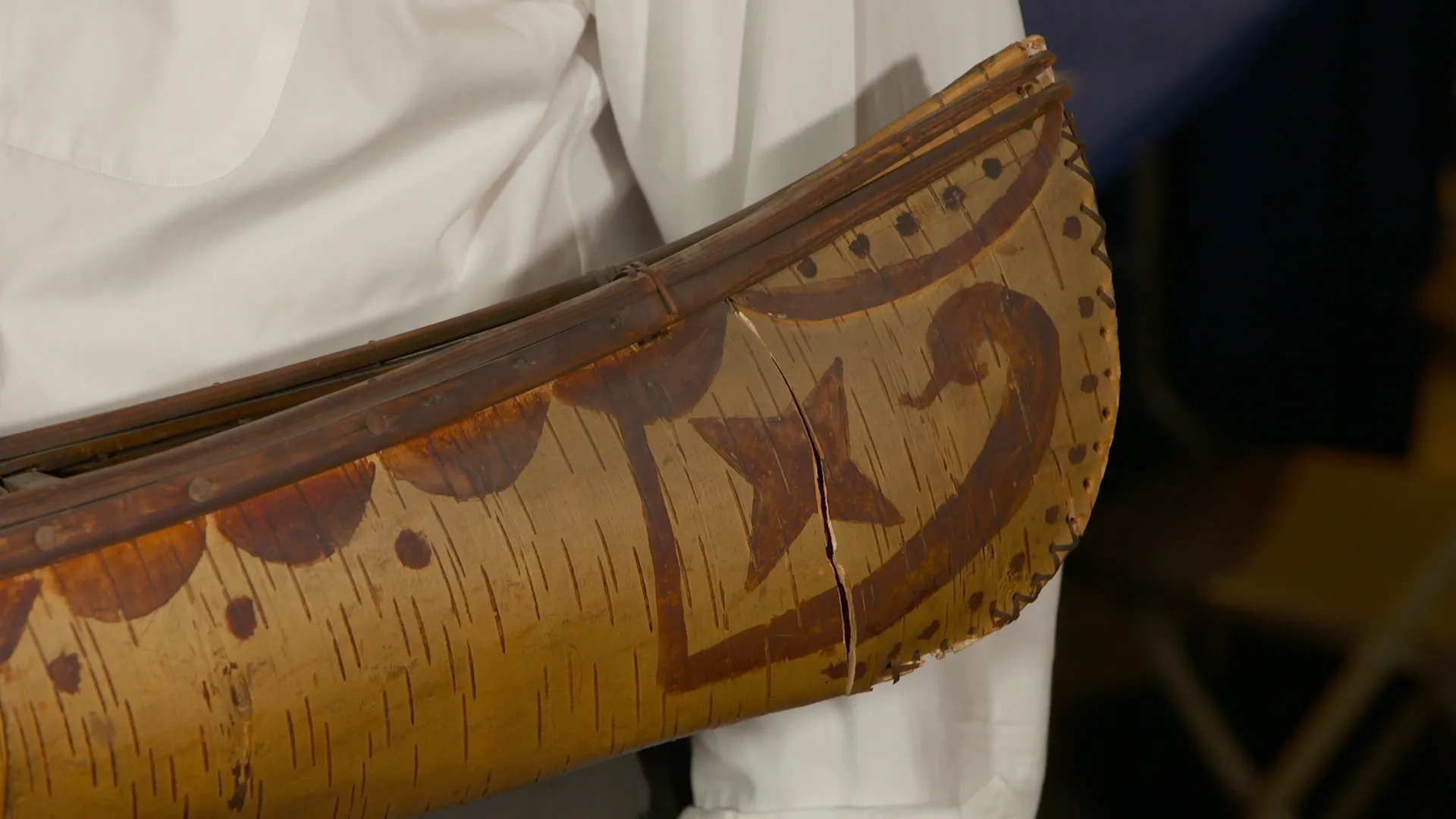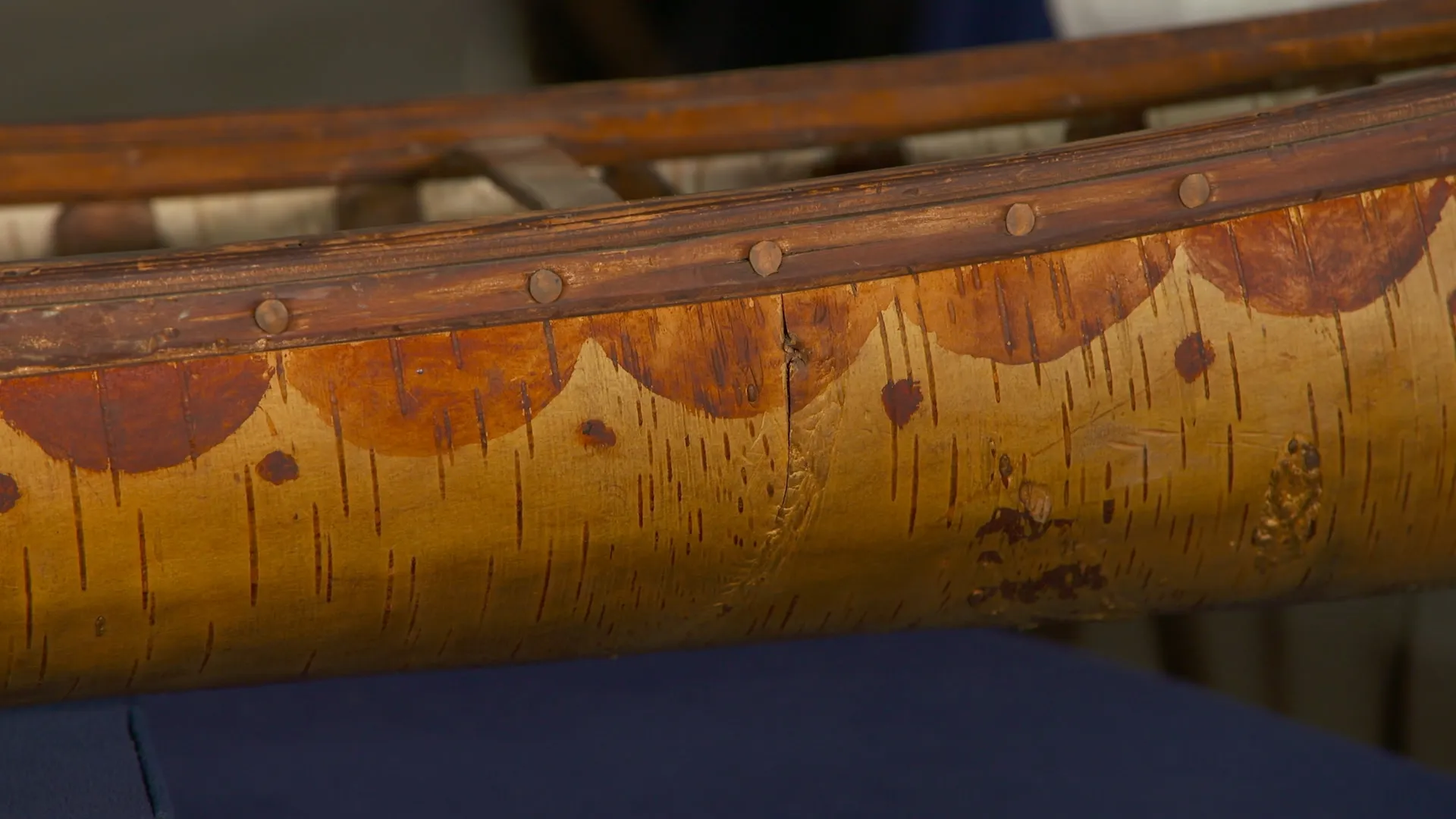GUEST: My grandfather had this probably about 130 years ago. He came out of Sorel, Canada, and they moved to Massachusetts. And from there, he vacationed a lot in Upstate New York, Upstate Vermont, and revisited Canada. I have no idea where this came from. Originally, I thought it was a salesman sample, but somebody, I don't believe, would have gone through this kind of effort if it, that's all it was.
APPRAISER: Have you ever had it appraised?
GUEST: I had it at Sotheby's down here just about, what, ten, 15 years ago, and they guessed-- and that's estimated-- $3,000 to $4,000.
APPRAISER: I see-- it's not a salesman sample. It is a model canoe.
GUEST: Mm-hmm.
APPRAISER: It's meticulously made to scale.
GUEST: Mm-hmm.
APPRAISER: It originated in Maine.
GUEST: Really?
APPRAISER: It's either made by the Penobscot...
GUEST: Yeah.
APPRAISER: ...or Mi'kmaq Indians...
GUEST: Okay.
APPRAISER: ...between 1870 and 1890.
GUEST: Mm-hmm.
APPRAISER: And my sense is that it's Penobscot.
GUEST: All right.
APPRAISER: Uh, both are Algonquin people.
GUEST: Yeah.
APPRAISER: In relationship to their material culture, the biggest things they ever made were their lodges and then their canoes.
GUEST: Okay.
APPRAISER: For which they were famous. This is a really large example of the form.
GUEST: Mm-hmm.
APPRAISER: Uh, more typically a quarter to a third this size. This is about five-and-a-half feet long.
GUEST: Okay-- oh, yeah.
APPRAISER: This, it's a fab, fabulous size. The canoe is made of birch bark.
GUEST: Mm-hmm.
APPRAISER: The surface epidermis of the birch bark is scratched away, and you get these remarkable designs. This is a traditional design.
GUEST: Mm-hmm.
APPRAISER: And it has spiritual implications. On the front, you have a star.
GUEST: Right.
APPRAISER: But it also suggests the four sacred directions.
GUEST: Okay.
APPRAISER: Very, very important to Native cosmology. In addition, you have this curved element. It's called a single volute. It may reflect, in the forest, a fiddle fern coming up out of the soil.
GUEST: Oh, really?
APPRAISER: Right in the middle...
GUEST: Yeah?
APPRAISER: ...there is a miniature canoe scratched away. And there's a double volute...
GUEST: No kidding.
APPRAISER: ...coming up out of the canoe.
GUEST: Yeah?
APPRAISER: It suggests the tree of life. The canoe is empowered spiritually...
GUEST: Okay.
APPRAISER: ...by the iconography. It's not typical to see, uh, the accoutrements. So you have two paddles, they're made to scale. They're probably made of poplar wood. But interestingly, you've got campsite accoutrements.
GUEST: Yeah.
APPRAISER: You've got a hatchet and you have a fish. Typically, men were going out on their hunting and fishing...
GUEST: Right.
APPRAISER: ...sojourns, and they would come back...
GUEST: Yes.
APPRAISER: ...roast fish...
GUEST: Yeah.
APPRAISER: ...chop wood.
GUEST: Mm-hmm.
APPRAISER: The canoe by itself would have, I think, a retail value of, easily, $4,500.
GUEST: Mm-hmm.
APPRAISER: The fact that we have the two paddles, the field hatchet, and the little, uh, fish...
GUEST: Yeah.
APPRAISER: ...enhances the value overall to perhaps $5,000.
GUEST: Nice.
APPRAISER: And then, should you wish to insure this...
GUEST: Mm-hmm.
APPRAISER: ...we would increase that about 25%.
GUEST: Yeah.
APPRAISER: I'd bring the value up to about $6,500.
GUEST: Okay.
APPRAISER: This was a treasure in its day. It, it, it's a treasure now.
GUEST: It is to me, I'll tell you that.














